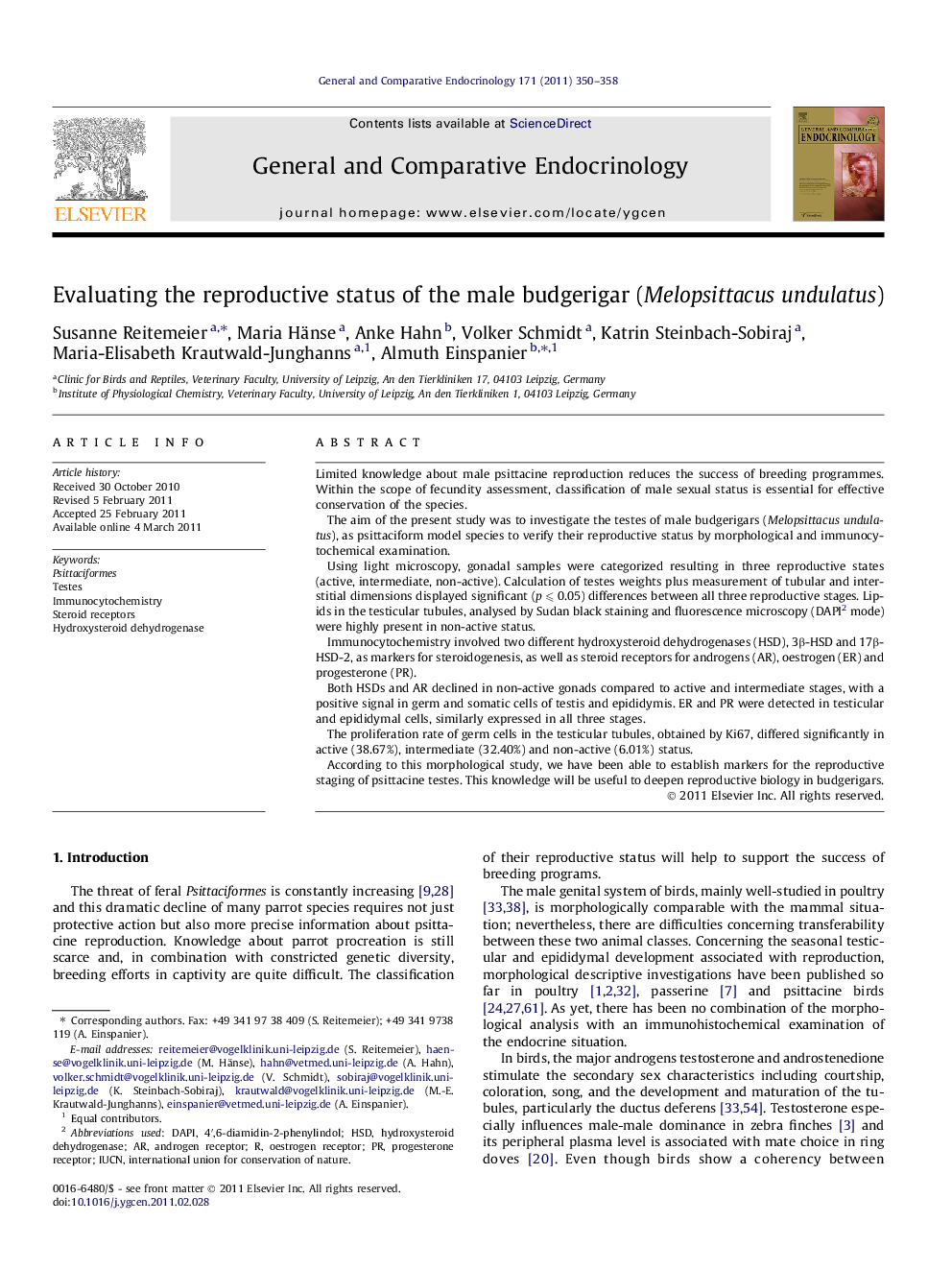| Article ID | Journal | Published Year | Pages | File Type |
|---|---|---|---|---|
| 2800920 | General and Comparative Endocrinology | 2011 | 9 Pages |
Limited knowledge about male psittacine reproduction reduces the success of breeding programmes. Within the scope of fecundity assessment, classification of male sexual status is essential for effective conservation of the species.The aim of the present study was to investigate the testes of male budgerigars (Melopsittacus undulatus), as psittaciform model species to verify their reproductive status by morphological and immunocytochemical examination.Using light microscopy, gonadal samples were categorized resulting in three reproductive states (active, intermediate, non-active). Calculation of testes weights plus measurement of tubular and interstitial dimensions displayed significant (p ⩽ 0.05) differences between all three reproductive stages. Lipids in the testicular tubules, analysed by Sudan black staining and fluorescence microscopy (DAPI2 mode) were highly present in non-active status.Immunocytochemistry involved two different hydroxysteroid dehydrogenases (HSD), 3β-HSD and 17β-HSD-2, as markers for steroidogenesis, as well as steroid receptors for androgens (AR), oestrogen (ER) and progesterone (PR).Both HSDs and AR declined in non-active gonads compared to active and intermediate stages, with a positive signal in germ and somatic cells of testis and epididymis. ER and PR were detected in testicular and epididymal cells, similarly expressed in all three stages.The proliferation rate of germ cells in the testicular tubules, obtained by Ki67, differed significantly in active (38.67%), intermediate (32.40%) and non-active (6.01%) status.According to this morphological study, we have been able to establish markers for the reproductive staging of psittacine testes. This knowledge will be useful to deepen reproductive biology in budgerigars.
► We established markers to evaluate the reproductive situation of male Psittaciformes. ► Active psittacine testes displayed androgen receptor-positive germ cells. ► This is the first evidence of oestrogen and progesterone receptors in avian testes. ► Active budgerigars expressed steroidogenic enzymes in testes and epididymides. ► Masses of lipids (e.g. lipofuscin) accumulated in the tubules of non-active testes.
